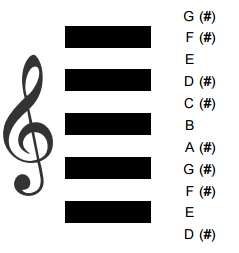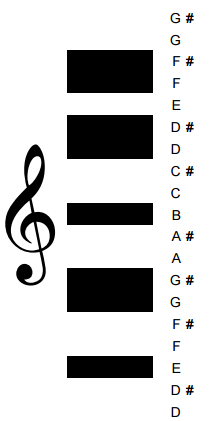The staff is not optimized for piano, nor vice versa. Both the staff and the keyboard are optimized towards playing diatonic scales. A diatonic scale is a 7-note scale containing exactly one note of each letter type, and which contains a mixture of whole and half steps. By far, the vast majority of western music (from Renaissance and Classical, to Pop and Rock) is written in diatonic scales. These 7 notes form your "palette", if you will. If you sing a simple scale (do, re, mi, fa, so, la, ti, do) you are singing a diatonic scale. Because the notes in this scale are perceived as adjacent, it makes sense, to aid in sight reading, to represent them as adjacent in a staff notation, or in a keyboard layout.
However when moving to string instruments, specifically the guitar and violin (in my case), I find the notation a lot less intuitive.
This is because, due to the nature of those instruments, a note's position on a string must be related exactly to its physical frequency, and cannot be related to perceptions of adjacency. This exposes the gaps in the diatonic scale, and prevents the instrument from being optimized for playing diatonically (unlike a piano, where the keys can be arranged in whatever pattern one pleases).
I have used used (#) to denote the positions in which it is legal to put a sharp.
Others have already pointed this out, but this statement is in error. Sharps and flats can be added to any note. To check out previous questions about this, see:
The Wikipedia page on staff positions states:
The vertical position of the notehead on the staff indicates which note to play: higher-pitched notes are marked higher on the staff.
I don't believe this is true, since a note with a sharp accidental will be higher-pitched that its natural counter part, but it won't appear higher on the staff.
Again, the staff is optimized towards diatonic scales, which have exactly one note of each letter type. In the staff, "some form" of A will always be written below "some form" of B, which will always be written below "some form" of C. It is true that a staff position can represent multiple pitches, but in a diatonic scale, only one of them will be used at any given time. Key signatures (and accidentals) will tell you which form of each letter to use, and will guarantee that these notes are properly ordered.
Technically, it could be possible to write, for example, an A♯ and a B%flat; at the same time, which would represent the same pitch in two different staff positions. You could even write a C♭ and a B♯ which would have a pitch relationship inverted to their staff position. But practically speaking, you will likely never see this. It's similar to the English sentence "This sentence is false," -- it may follow the rules of grammar and syntax, but it has no meaningful semantic content.
So the notes in the staff will be ordered. But they will not be regularly spaced. Two adjacent notes on a staff will be separated by either a half step or a whole step. Once again, this is deliberate, and goes back to the shape of the diatonic scale that the staff represents.
To make this clear, I present a to scale version of the treble clef, which forms my second assertion
Your proposal is based on the equally-spaced chromatic scale, and as such, it actually obscures the nature of the diatonic scale. You certainly aren't the first to propose a staff system based on a chromatic scale rather than a diatonic one. Here's a website that collects such alternative notation ideas -- might as well add yours to the mix. Or see if there's one there that you like better. These systems might seem logical at first, and could even be useful to someone doing atonal music, but for people working in tonal diatonic systems (like 99.99+% of western music) using a notation system that ignores the diatonic scale is likely to prove more difficult. For example, notes that sound adjacent in the scale (or that "feel" adjacent to a singer) are now visually separated by a gap, causing you to lose a sense of continuity.
If the only reason for making this change is to correspond better to the physical layout of string instruments, I'd point out that we already have a notation called tablature which does a better job of meeting this purpose.
Are my assertions correct (i.e. am I missing anything)?
To summarize:
- Your assertion about permissible sharps was wrong
- Your assertion about wikipedia being wrong was wrong, since a proper application of key signatures and accidentals will guarantee that the pitches remain in order with the staff (higher pitches are written higher on the staff), however...
- Your assertion that the staff is not scaled one-to-one with pitch is correct -- but this is by design. It is scaled to the diatonic scale.
- Your "second assertion" is actually just a proposal, and cannot be true or false (but it is true that in such a system, or any of the similar ones that I linked, sharps or flats wouldn't be needed; this is not necessarily an improvement).
Is this 'dangerous thinking' (i.e. am I misleading myself)?
Depends on whether you want to write/play atonal music. If that is not your goal, then thinking that a notation system can be improved by disregarding the diatonic scale used by the music it represents shows a lack of understanding.


